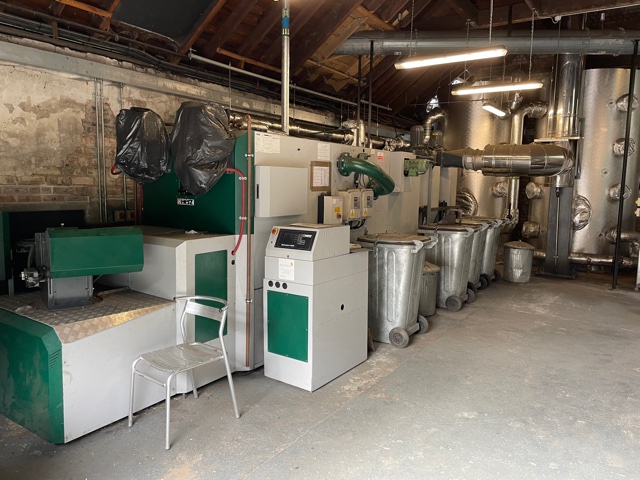Renewables at Hopetoun: Biomass Boiler
Following a period of intense interest in Renewable energy from the beginning of the 2010 decade, Hopetoun made the decision to commission and install a woodchip biomass boiler with the aim of supplying heat to Hopetoun House, Hopetoun Estate Office and a number of adjoining properties within reasonable proximity to the boiler.
A 800 kw Hertz boiler was installed in a redundant joiners workshop to the rear of the Hopetoun Estate Office which, in a separate project was also being renovated, having previously been a joners machine shop! A new woodchip store was also constructed and in May 2013 the unit began generating heat with full RHI accreditation from 23rd May 2013.
In laymen’s terms the boiler burns woodchip, which heats water within two large vessels. This water is pumped from the vessels around an insulated network of pipes (measuring 1 mile in length with a capacity of 30,000 litres) to each of the designated properties. Each property has a heat interface unit and the heat transfers to the heating and hot water system within each property. There is no direct transfer of water between main loop and the individual property.
The system is controlled and monitored by complex software which together with the boiler repair and maintenance is supported by our own staff as well as a number of contractors and suppliers. In the event of a boiler malfunction or power cut, a backup oil boiler is available to pick up the slack. Income arises from heat sold to consumers as well as RHI payments which are supported for 20 years from date of commissioning.
Allied to the actual boiler is the production and supply of woodchip. An original and important aim of the project was the ability to supply woodchip from the Estate woodlands without loss of sustainability. In practise, it is possible to buy in timber for chipping but harvesting and chipping our own timber remains the most cost effective use of softwood tops and thinning’s. Whilst the boiler is capable of burning hardwood, this product is better sold for an established log business or to trade off for softwood. The woodchip produced from softwood must adhere to a specified moisture content and sample size composition.
The project has proved to be a huge learning curve for all involved but the principals behind the project remain credible and relevant given today’s global environmental and climatic challenges.
M J Eagers
July 2021
Categories: Hopetoun House






